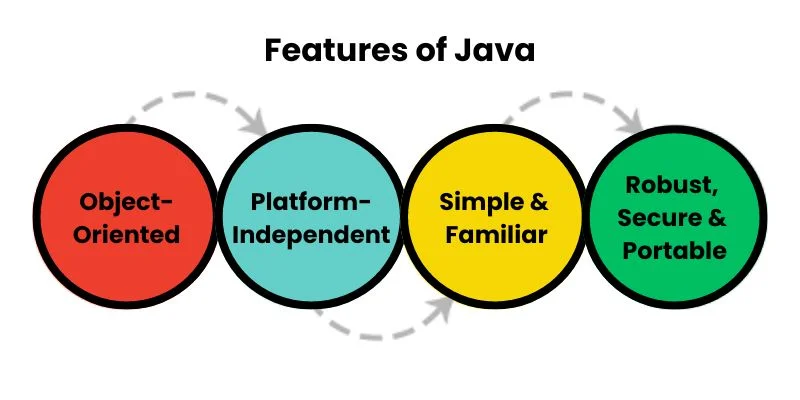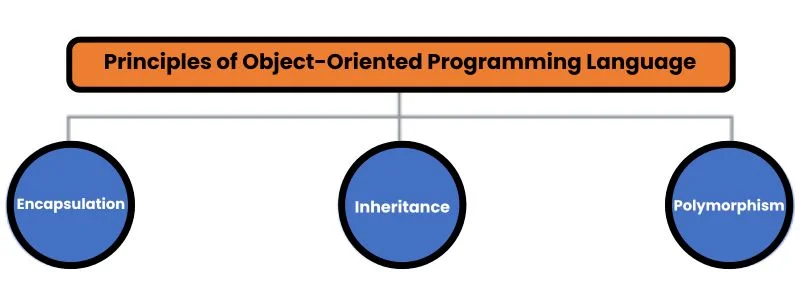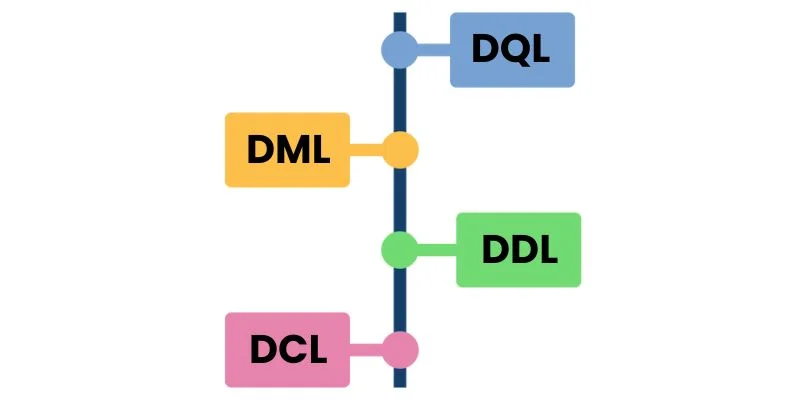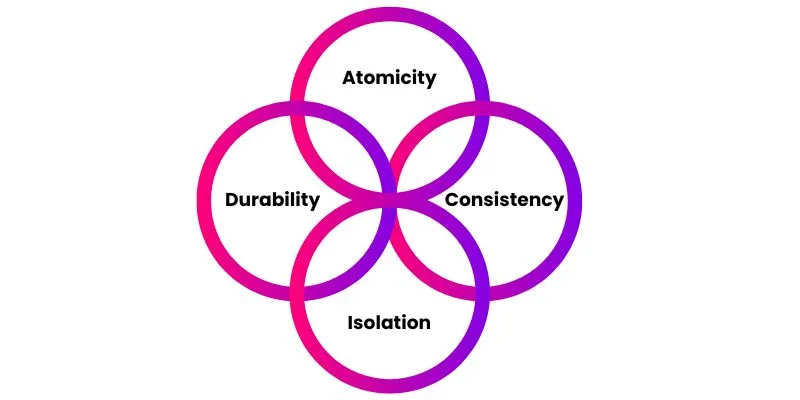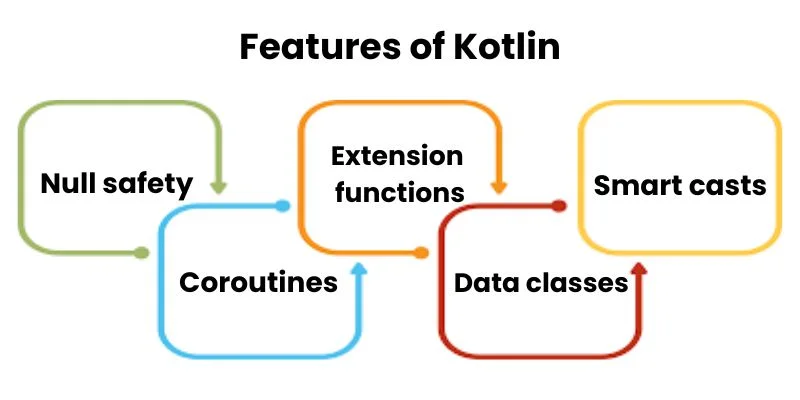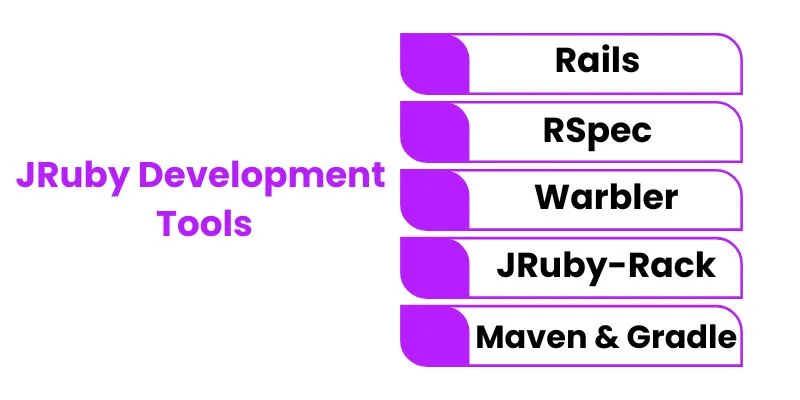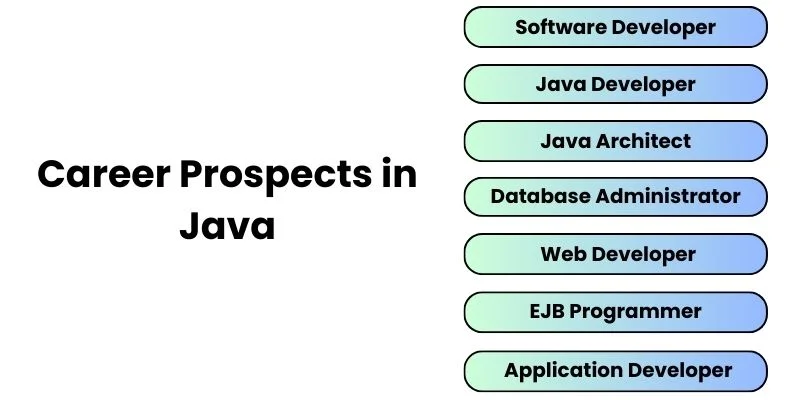Java is a high-level programming language created in 1982 by James Gosling. It was used to create extensive applications and is founded on the ideas of object-oriented programming. Due to its features and performance, Java is the most used language in leading businesses like Uber, Airbnb, Google, Netflix, Instagram, Spotify, Amazon, etc.
To be placed in a prominent company, you have to master the Java Interview Questions and Answers to clear their Java Online Assessment and Technical Interview. Are you seeking additional Java-related job opportunities? Discover Freshers Jobs for enhanced career prospects and better career pathways.
Java Interview Questions and Answers
Core Java Interview Questions for Freshers
- What is Java?
Java is a high-level, Object-Oriented Programming language developed by Sun Microsystems. It is platform-independent, meaning that Java programs can run on any device or operating system with the installed Java Virtual Machine (JVM).
- What are the primary features of Java?
- Object-Oriented: Java supports the principles of encapsulation, inheritance, polymorphism, and abstraction.
- Platform-Independent: With the aid of the Java Virtual Machine (JVM), Java programs can run on any platform.
- Simple and Familiar: Programmers can easily learn and utilize Java because of its syntax, which is comparable to those of C and C++.
- Robust, Secure and Portable: Java programs are robust due to features like exception handling and garbage collection. Java provides a robust security model to protect systems from harmful code. Additionally, Java’s architecture-independent nature makes it highly portable.
- What is the difference between a Class and an Object in Java?
| Class | Object |
| A class is a blueprint/template for creating objects. It defines the properties (attributes) and behaviors (methods) that class objects will have. | An object is an instance of a class. It is a real-world entity with state and behavior. Objects are generated using the new keyword followed by a call to the class’s constructor. |
- Distinguish between a Compiler and an Interpreter in Java.
| Compiler | Interpreter |
| A compiler translates a program’s entire source code into machine code (bytecode in Java) in a single step. The resulting bytecode can be executed later without needing the source code. Java uses a compiler to convert source code into bytecode. | An interpreter translates source code into machine code line by line and executes it immediately. In Java, the JVM acts as both an interpreter and a compiler. It initially interprets the bytecode and may later compile parts of the bytecode into native machine code for improved performance. |
- Define the main method in Java, and explain what its significance is.
The main method is the entry point of a Java program. It is where the program’s execution begins.
The main method has the following signature:
public static void main(String[] args)
- The public modifier indicates that the method can be accessed outside the class.
- The static modifier indicates that the method belongs to the class rather than any specific class instance.
- The void return type indicates that the method does not return any value.
- String[] args is an array of strings representing command-line arguments passed to the program.
Intermediate-level Java Interview Questions and Answers:
- Distinguish between Stack and Heap Memory in Java. Describe how they are utilized in Java.
| Stack Memory | Heap Memory |
| The memory space designated for each distinct program is known as stack memory. And a correction was made. | Heap memory is the part of the computer that was not designated for a Java program but that the program can use as needed, primarily during program runtime. |
Java uses this as:
- All variables, methods, etc., used when writing a Java program are kept in the stack memory.
- Any object generated in a Java application is also created in heap memory. In addition, the stack memory was used as a reference.
- Differentiate between Java and C++.
| Java | C++ |
| Java is both an interpreted and a compiled language. | C++ is simply a compiled language. |
| Programs in Java can run on any machine. | Programs written in C++ can only be executed on the machine they were compiled on. |
| Pointers are used internally by Java. | Pointers can be used within C++ programs. |
| Java does not allow the concept of multiple inheritances. | C++ allows multiple inheritances. |
- What are Instance and Local Variables in Java?
Instance Variable
The variables available to the methods belonging to a class are known as instance variables. They are declared both inside the class and outside of the methods. These variables characterize an object’s attributes and are inextricably linked to it. Each object in the class will have a copy of the variables available for use. Any changes to these variables will impact only that instance; all other class instances will continue functioning normally.
Example:
class Athlete {
public String athleteName;
public double athleteSpeed;
public int athleteAge;
}
Local Variable
Local variables are exclusively accessible inside a block, function, or constructor and can only be used inside the block scope. The other class methods are unaware whenever a local variable is declared inside a method.
Example:
public void athlete() {
String athleteName;
double athleteSpeed;
int athleteAge;
}
- Explain the default values set to the Java variables.
- Java variables don’t have default values. Before using a value, it must be initialized. If not, a compilation error with the message “Variable might not be initialized” will be raised.
- Depending on the data type, the default constructor will automatically initialize the default value if we build the object. This saves us from the hassle of manually initializing each variable. It will be assigned to null if it is a reference.
- It will assign to 0 if it is numeric.
- It will be assigned to false if it is a boolean, etc.
- Define Data Encapsulation.
Data encapsulation in object-oriented programming hides data properties and behaviors within a single unit. By guaranteeing that every object has its methods, properties, and functionalities and is independent of other objects, it helps developers adhere to modularity when designing software. It accomplishes data concealing since it is used to secure an object’s attributes.
Core OOP-related Java Interview Questions and Answers for Freshers
- Explain Object-oriented Programming and its fundamental principles.
The foundation of object-oriented programming (OOP) is objects, which are programming units that may hold both code (methods) and data (attributes). The fundamental ideas of OOPs are:
- Encapsulation: Encapsulation combines data and the operations performed on the data into a single unit or object and conceals the internal workings from external observers.
- Inheritance: Code reuse and the establishment of hierarchical relationships are facilitated by inheritance, which is the process of creating new classes (derived or child classes) that inherit properties & methods from existing ones (base or parent classes).
- Polymorphism: Using overloading and overriding methods to treat objects of various classes as members of the same superclass.
- State the difference between == and .equals() in Java.
| == | .equals() |
| == is used for reference comparison. It determines if two object references point to the same chunk of memory. | .equals() is a method used for content comparison. It checks if two objects’ contents (values) are equal based on implementing the method in the class. By default, it behaves the same as ==, but it can be overridden in classes to provide custom comparison logic. |
- Define Inheritance in Java and explain how it promotes code reuse.
In Java, the Inheritance feature enables a class/subclass or derived class to inherit characteristics and traits from a superclass or base class. The subclass encourages code reuse and minimizes code duplication by allowing access to and using the superclass’s attributes and functions. By defining the subclass as a more specialized form of the superclass, it creates a “is-a” link between the two classes.
- Define Polymorphism in Java and explain how it is accomplished.
The capacity of the same interface (method or function) to work on objects of different kinds or classes is known as polymorphism. Java allows for polymorphism through the use of overloading and overriding methods. A subclass can give a particular implementation of a method already specified in its superclass by using method overriding. The type of object determines at runtime which method should be used. Method overloading permits the coexistence of several methods in a class with the same name but distinct argument lists. The method signature is used at build time to determine which method should be used.
- Differentiate between Abstraction and Encapsulation in Java.
| Abstraction | Encapsulation |
| Abstraction is the technique of displaying an object’s primary characteristics while concealing its implementation details. It emphasizes the function of an entity over its method of operation. Java achieves abstraction through the usage of abstract classes and interfaces. | Bundling data (attributes) and methods that work with the data into a single unit (object) and limiting access to an object’s internal information is known as encapsulation. It facilitates data hiding and encourages reusability, modularity, and maintainability. |
Intermediate-level OOP-related Java Interview Questions and Answers for Freshers:
- Explain constructors and their uses.
Java constructors are unique methods for initializing class instances. They share the same name as the class and don’t even have void as a return type. The constructors are called implicitly when an object is formed using a class constructor after using the new keyword. They allocate memory, initialize instance variables, and perform other operations required for the object’s correct operation.
- Differentiate between an Abstract class and an Interface class in Java.
| Abstract Class | Interface Class |
| Java abstract classes can have abstract methods (methods without a body) but they cannot be instantiated. Both concrete and abstract approaches are possible. Unless they are also defined as abstract, subclasses are required to implement abstract methods. Instance variables are allowed in abstract classes. | Java interfaces are reference types that resemble classes, but they are limited to nested types, default methods, static methods, constants, and method signatures. Interface methods are inherently abstract and are not permitted to have method bodies. To provide implementation for the methods specified in the interface, classes implement interfaces. Although a class can extend only one class, it can implement several interfaces. |
- What is the use of the “super” keyword in Java?
In Java, the current object’s superclass, or parent class, is referred to using the super keyword. In a name dispute, it can distinguish between members of the superclass and subclass, access superclass properties, and invoke superclass constructors and functions. If the subclass uses constructor bodies, the first sentence in the constructor body must be the call to the super() constructor.
- What is the difference between Method Overriding and Method Overloading?
| Method Overriding | Method Overloading |
| Defining numerous methods with the same name but distinct parameters within the same class is known as method overloading. The methods’ parameter lists (number, kind, or order of parameters) must differ. Java uses the arguments supplied at invocation to decide which overloaded method to call. | Method overriding is defining a method already defined in its superclass in a subclass. The superclass and subclass must share the same method signature, which consists of the name, parameters, and return type. When a subclass object is called, the overridden method in the subclass is called with a specific implementation that is called during runtime. |
- What is the Method Hiding in Java, and when will it occur?
Method hiding occurs when a subclass defines a static method that has the same signature as a static method in its superclass. Which version of the function to run at compilation time is determined by the reference type, and the subclass method “hides” the superclass method.
Core SQL-based Java Interview Questions for freshers
- Define SQL and how it is essential for Java Development.
SQL is a common language for interacting with and working with databases. It enables users to carry out operations like creating database structures, changing records, and querying data. SQL is used to communicate with databases in Java programming together with JDBC (Java Database Connectivity). Java applications use SQL queries to access and modify data stored in databases.
- State the differences between SQL and JDBC.
| SQL | JDBC |
| SQL is a language used to interface with databases. It executes operations such as querying data, changing records, and defining database structures. | Java Database Connectivity, or JDBC, is an API for Java that enables communication between Java programs and databases. It offers classes and interfaces for handling query results, running SQL commands, and establishing database connections. |
- Define the various types of SQL Commands.
- Data Query Language (DQL): SELECT statements are used to get data from the database using Data Query Language (DQL).
- Data Manipulation Language (DML): INSERT, UPDATE, and DELETE commands are used to alter data in a database using the Data Manipulation Language (DML).
- Data Definition Language (DDL): Using CREATE, ALTER, and DROP statements, Data Definition Language (DDL) is used to define and alter database structures like tables, constraints, and indexes.
- Data Control Language (DCL): Using the GRANT and REVOKE statements, Data Control Language (DCL) manages database access.
- Differentiate between INNER JOIN and OUTER JOIN?
| INNER JOIN | OUTER JOIN |
| This join method returns records with matching values from both tables using the supplied join condition. | Based on the given join condition, this query retrieves all records from one table and the matching records from another. NULL values are included in the result set if no matching records exist in the other table. |
- Explain the Primary key and its importance.
A primary key is a column uniquely identifying each table record. It ensures each record has a unique identifier and enforces data and entity integrity. Primary keys are important in database design because they ensure data consistency and enable efficient data retrieval and manipulation operations. They also serve as references for establishing relationships between tables.
Intermediate SQL-based Java Interview Questions and Answers for freshers:
- Differentiate between the Clustered Index and the Non-Clustered Index.
| Clustered Index | Non-Clustered Index |
| In a clustered index, the physical order of the rows in the table corresponds to the order of the index. Each table can have only one clustered index, and it determines the physical storage order of the table’s data. | In a non-clustered index, the physical order of the rows in the table does not correspond to the order of the index. Each table can have multiple non-clustered indexes, and they do not affect the physical storage order of the table’s data. |
- Define Normalization and explain its importance in Database Design.
Normalization is the practice of arranging data in a database to lessen duplication and enhance data integrity. It entails dividing a database into more manageable, smaller tables and establishing connections between them.
Importance: Insertion, update, and deletion anomalies are among the data abnormalities that normalization helps to prevent. Getting rid of unnecessary data also decreases storage space and enhances query performance.
- Explain the ACID properties of transactions in SQL.
- Atomicity: A transaction must either be performed in whole or not at all, according to atomicity. The transaction is rolled back if any part fails.
- Consistency: Makes sure a transaction changes the database from one consistent state to another. This is known as consistency. Every constraint pertaining to data integrity is upheld during the transaction.
- Isolation: Ensuring that one transaction’s execution is separate from that of other transactions is known as isolation. Only when the first transaction is committed are changes made by that transaction visible to subsequent transactions.
- Durability: Assures that a committed transaction’s consequences endure system failures and are everlasting. The modifications made to a transaction are kept in the database forever once it is committed.
- What are views in SQL, and how are they used?
Views are virtual tables created from SELECT query results. They do not contain any data but provide a way to present data from one or more tables in a customized format. Views simplify complex queries, provide a layer of abstraction over underlying tables, and restrict access to sensitive data by exposing only specific columns or rows to users.
- Explain the difference between a stored procedure and a function in SQL.
| Stored Procedure | Function |
| A collection of SQL statements that are kept and run on the database server is called a stored procedure. It has the ability to perform operations, take parameters as input, and return results. | A named PL/SQL block that yields a single value is called a function. To carry out computations or return data, it can be invoked from SQL statements or other PL/SQL blocks. |
Kotlin-based Java Interview Questions for Freshers
- What is Kotlin, and explain how it relates to Java?
Java and other Java-based apps can utilize Kotlin, a statically typed programming language, in conjunction with Java on the Java Virtual Machine (JVM). Because Kotlin code is entirely compatible with Java code, developers can take advantage of pre-existing Java libraries and frameworks.
- What are the vital features that help Kotlin to differentiate itself from Java?
Some vital features of Kotlin include:
- Null safety: Kotlin’s type system eliminates null pointer exceptions by differentiating between nullable and non-nullable types.
- Coroutines: Kotlin makes asynchronous programming easier by supporting coroutines, a lightweight form of concurrency.
- Extension functions: Without changing the source code of already existing classes, Kotlin enables adding additional functions.
- Data classes: Classes mostly used to hold data can be defined using a clear syntax that Kotlin offers.
- Smart casts: Kotlin’s type system reduces the requirement for explicit casting by automatically casting variables following type checks.
- Differentiate between val and var.
| val | var |
| val is used for immutable variables (constants) whose value cannot be changed once assigned. | var is used for mutable variables whose value can be changed after assignment. |
- What is a nullable type in Kotlin, and how do you handle null safety?
In Kotlin, a nullable type is denoted by appending ? to the type. This denotes that the variable can hold either a non-null value or a null value. To handle null safety, Kotlin provides safe calls (?.), the Elvis operator (?:), and the!! Operator for asserting non-nullability.
- Explain the difference between an extension and regular functions in Kotlin.
| Extension function | Regular function |
| An Extension function in Kotlin is a function that adds new functionality to an existing class without modifying its source code. It allows you to extend classes with new methods. | A Regular function is defined within a class or a package and can only be called on instances of that class or through imports. |
Intermediate Kotlin-based Java Interview Questions and Answers:
- What are higher-order functions in Kotlin? Explain their functions.
Higher-order functions in Kotlin can accept other functions as parameters or return functions as results. They enable functional programming paradigms such as passing behavior as arguments, abstracting over operations, and implementing callbacks and event listeners.
- Explain the when expression in Kotlin and how it differs from the switch statement in Java.
An enhanced version of Java’s switch statement is the Kotlin when expression. It allows you to match values against multiple conditions and execute corresponding branches. Unlike switches, it can handle any data type, including ranges, enums, complex conditions, and branch return values.
- What are data classes in Kotlin, and when would you use them?
Data classes in Kotlin are primarily used to hold data. Equals(), hashCode(), toString(), and copy() methods are automatically created based on the properties defined in the primary constructor. Data classes are useful for modeling immutable data objects, such as DTOs (Data Transfer Objects) or POJOs (Plain Old Java Objects).
- Explain the concept of type inference in Kotlin and how it helps reduce boilerplate code.
Type inference in Kotlin allows the compiler to automatically infer the data type of variables and expressions based on their context. This reduces the need for explicit type annotations, leading to cleaner and more concise code. Type inference also helps catch type mismatch errors at compile time.
- What are coroutines in Kotlin, and how do they facilitate asynchronous programming?
Coroutines in Kotlin are lightweight threads that allow for easy and efficient asynchronous programming. They enable non-blocking, sequential code execution without the overhead of traditional threads. Coroutines simplify handling asynchronous tasks such as network requests, file I/O, and UI updates by providing constructs like async, await, and launch.
Core JRuby-based Java Interview Questions and Answers for Freshers
- What is JRuby, and how does it relate to Java?
JRuby implements the Ruby programming language on the Java Virtual Machine (JVM). It allows developers to write Ruby code seamlessly, integrating with Java libraries and applications. JRuby enables using Ruby’s expressive syntax and features within Java projects.
- How does JRuby differ from standard Ruby implementations like MRI?
While both JRuby and standard Ruby implementations like MRI (Matz’s Ruby Interpreter) support the Ruby programming language, JRuby offers some key differences:
- JRuby runs on the JVM, providing access to Java libraries and interoperability with Java code.
- JRuby benefits from the performance optimizations and memory management features of the JVM.
- JRuby allows seamless integration with existing Java applications and frameworks.
- Explain the concept of interoperability between JRuby and Java.
Interoperability between JRuby and Java refers to the ability to use Java classes, methods, and libraries from within JRuby code and vice versa. JRuby can call Java code directly using JRuby’s Java integration features, such as importing Java packages, creating Java objects, and invoking Java methods. Similarly, Java code can invoke JRuby scripts and leverage Ruby’s dynamic features.
- What do you call a Java method from JRuby?
You can call a Java method from JRuby by importing the Java class or package using the java_import method, creating an instance of the Java class (if necessary), and invoking the desired Java method on the object.
Here’s an example:
java_import ‘java.util.ArrayList’
list = ArrayList.new
list.add(“Hello”)
list.add(“World”)
puts list.size
- What are the advantages of using JRuby in Java projects?
Some advantages of using JRuby in Java projects include:
- Access to a large ecosystem of Java libraries and frameworks.
- Improved performance and scalability due to the JVM’s optimizations.
- Ability to leverage Ruby’s expressive syntax and dynamic features in Java applications.
- Seamless integration with existing Java codebases and tools.
Intermediate JRuby-related Java Interview Questions and Answers:
- Explain how JRuby handles Java exceptions.
JRuby transparently maps Java exceptions to Ruby exceptions, allowing Ruby code to catch and handle Java exceptions as if they were Ruby exceptions. When a Java exception is raised within JRuby code, it is wrapped in a Ruby exception object. It can be rescued using Ruby’s exception-handling mechanisms, such as begin, rescue, and ensure.
- What is the JRuby equivalent of Java’s HashMap?
In JRuby, you can use Ruby’s Hash class, which is equivalent to Java’s HashMap. Ruby’s Hash class provides similar functionality for storing key-value pairs and performing operations such as insertion, retrieval, and deletion.
- How do you handle method overloading in JRuby?
Method overloading is automatically handled by JRuby based on the quantity and kind of arguments that are supplied to a method. JRuby allows specifying numerous methods with the same name but distinct parameter lists, in contrast to Java where method overloading must be explicitly specified using separate method signatures. Method calls are dynamically dispatched by JRuby based on the arguments supplied during runtime.
- Explain the differences between JRuby and standard Ruby about concurrency and threading.
JRuby benefits from the concurrency and threading features the Java platform provides, such as Java’s native threads and the java.util.concurrent package. This allows JRuby to leverage multi-threading capabilities for concurrent execution of Ruby code. In contrast, standard Ruby implementations like MRI (Matz’s Ruby Interpreter) rely on native threads, which may have limitations depending on the underlying platform.
- What tools and frameworks are available for JRuby development?
Some tools and frameworks commonly used for JRuby development include:
- Rails: The Ruby on Rails framework for building web applications.
- RSpec: A behavior-driven development (BDD) framework for testing Ruby code.
- Warbler: A tool for packaging JRuby applications as executable WAR files for deployment to Java application servers.
- JRuby-Rack: A bridge between JRuby and Rack, allowing JRuby applications to run on Rack-compliant web servers.
- Maven and Gradle: These are build automation tools for managing JRuby dependencies and building JRuby projects alongside Java projects.
Career Prospects
As an application programming language, Java is expected to develop 19% between 2014 and 2024, according to the Bureau of Labor Statistics’s (USA) report. Popular websites, including Google, Amazon, YouTube, LinkedIn, and eBay, employ Java. HCL, Cognizant, TCS, IBM, Capgemini, Hewlett Packard Enterprise, JPMorgan Chase, Accenture, Microsoft, Cisco Systems, Oracle, and Akamai Technologies are reputable businesses employing Java developers. The average fresher Salary for Java Developers is 3.7 to 4.2 lakhs per annum.
Software Developer
Software programs must be designed, coded, tested, and maintained by a software developer. They collaborate closely to comprehend needs and provide superior software solutions with clients, stakeholders, and other team members. Depending on the organization, region, and skills, a software developer’s starting compensation can vary from ₹3,00,000 to ₹6,00,000 annually.
Java Developer
A Java developer or programmer specializes in developing applications using Java and related technologies. They design and implement software solutions, troubleshoot issues, and optimize performance using Java frameworks and libraries. The fresher Salary for a Java Developer or programmer usually ranges from ₹3,00,000 to ₹6,50,000 per annum, based on location, company size, and skills.
Java Architect
A Java Architect designs and oversees the architecture of Java-based software systems. They define technical requirements, select appropriate technologies, and guide development teams to ensure the software’s scalability, performance, and maintainability. Fresher salaries for Java architects are less common, as this role typically requires several years of experience. However, junior Java architects may earn between ₹6,00,000 to ₹10,00,000 per annum, depending on qualifications and skills. Graduates can look for Java Architect Job openings in Free Alert Jobs.
Database Administrator
A Database Administrator (DBA) manages and maintains databases to make sure that they operate efficiently, securely, and reliably. They handle database design, installation, configuration, performance tuning, backup and recovery, and data security tasks. Fresher salaries for database administrators typically range from ₹3,00,000 to ₹6,00,000 per annum, with variations based on location, company, and specialization in specific database technologies.
Web Developer
Building and maintaining websites and web apps is the specialty of a Web Developer. They use technologies like HTML, CSS, JavaScript, and various web frameworks to create user-friendly and visually appealing web experiences. Fresher Salary for Web Developers in India generally ranges from ₹2,50,000 to ₹5,00,000 per annum, depending on factors like location, company, and proficiency in relevant web development technologies.
EJB Programmer
An EJB (Enterprise JavaBeans) programmer focuses on developing enterprise-level applications using the EJB technology within the Java EE (Enterprise Edition) platform. They design and implement components such as session beans, entity beans, and message-driven beans to build scalable and distributed enterprise systems. Fresher salaries for EJB programmers are similar to those of Java developers, typically ranging from ₹3,00,000 to ₹6,50,000 per annum in India. Looking for fresher jobs in Hyderabad? Explore a range of exciting opportunities in various industries across the city.
Application Developer
An application developer creates software applications for various platforms, including desktop, mobile, and web. They work with programming languages, frameworks, and tools to develop, test, and deploy applications that meet user and business needs. Fresher salaries for application developers vary based on the specific technology stack, industry, and location. In India, they generally range from ₹3,00,000 to ₹6,00,000 per annum.
These fresher salary details are approximate and may vary depending on location, company reputation, educational qualifications, and individual skills and expertise.
Java is one of the leading high-level business languages used for general extensive applications. Aspiring to begin a career in the Java field as a fresher requires a great passion for coding and continuous learning. Individuals can choose one of the Top 10 Java Institutes in Chennai to improve their skills in Java. This blog explored core to intermediate Java Interview Questions And Answers For Freshers based on Object-Oriented Programming, kotlin and JRuby.



